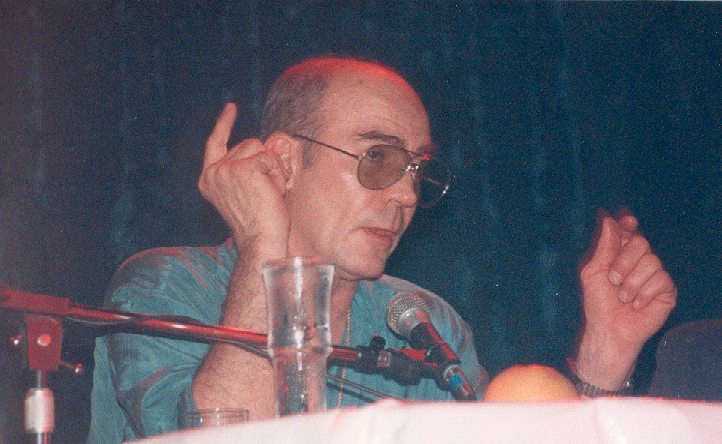[Most Recent Entries] [Calendar View]
Thursday, May 16th, 2019
- Issues, Claims, Arguments
- Arguments and Non-Arguments
- Value Judgements
- Deductive and Inductive Arguments with Implicit Premises
- Complex Arguments, Unstated Premises
- Deductive and Inductive Arguments 1
- Deductive and Inductive Arguments 2
- Deductive and Inductive Arguments 3
- Fallacies of Composition and Division
- Information Sources
- Experts and Appeal to Authority
- Critical Thinking and Advertising
- Rhetorical Devices 1
- Rhetorical Devices 2
- Rhetorical Devices 3
- Fallacies 1
- Fallacies 2
- Fallacies 3
- Fallacies 4
- Fallacies 5
- Fallacies 6
- Inductive Arguments 1
- Inductive Arguments 2
- Inductive Arguments 3
- bloated, big bag of bloatation – drunk
- bound-and-hagged – staying home on Friday or Saturday night
- cob nobbler – loser
- dish – desirable guy
- fuzz – heavy wool sweaters
- harsh realm – bummer
- kickers – heavy boots
- lamestain – uncool person
- plats – platform shoes
- rock on – a happy goodbye
- score – great
- swingin' on the flippity-flop – hanging out
- tom-tom club – uncool outsiders
- wack slacks – old ripped jeans
| Time | Event |
| 8:00a | The Writing System of the Cryptic Voynich Manuscript Explained: British Researcher May Have Finally Cracked the Code
Humanity will remember the name of James Joyce for generations to come, not least because, as he once wrote about his best-known novel Ulysses, "I've put in so many enigmas and puzzles that it will keep the professors busy for centuries arguing over what I meant, and that's the only way of insuring one's immortality." If Joyce was right, then the author of the mysterious Voynich manuscript (about which you can see an animated introduction here) has set a kind of standard for immortality. Filled with odd, not especially explanatory illustrations and written in a script not seen anywhere else, the early 15th-century text has perplexed scholars for at least 400 or so years of its existence. But recent years have seen a few claims of having cracked the Voynich manuscript's code: one effort made use of artificial intelligence, another concludes that the text was written in phonetic Old Turkish, and the latest declares the Voynich manuscript to have been composed in "the only known example of proto-Romance language." University of Bristol Research Associate Gerard Cheshire, the man behind this new decoding, describes that language as "ancestral to today’s Romance languages including Portuguese, Spanish, French, Italian, Romanian, Catalan and Galician. The language used was ubiquitous in the Mediterranean during the Medieval period, but it was seldom written in official or important documents because Latin was the language of royalty, church and government." And what, pray tell, is the Voynich manuscript actually about? Cheshire has revealed little about its content thus far, though he has described the text as "compiled by Dominican nuns as a source of reference for Maria of Castile, Queen of Aragon." Though he has claimed to determine the nature of its unusual language — one without punctuation but with "diphthong, triphthongs, quadriphthongs and even quintiphthongs for the abbreviation of phonetic components" — deciphering its more than 200 pages of content stands as another task altogether. In the meantime, you can read his paper "The Language and Writing System of MS408 (Voynich) Explained," originally published in the journal Romance Studies.
Although Cheshire's discovery has produced headlines like the Express' "Voynich Manuscript SOLVED: World’s Most Mysterious Book Deciphered After 600 Years," others include Ars Techhnica's "No, Someone Hasn't Cracked the Code of the Mysterious Voynich Manuscript." That article quotes Lisa Fagin Davis, executive director of the Medieval Academy of America (and vocal Voynich-translation skeptic), criticizing the foundation of Cheshire's claim: "He starts with a theory about what a particular series of glyphs might mean, usually because of the word's proximity to an image that he believes he can interpret. He then investigates any number of medieval Romance-language dictionaries until he finds a word that seems to suit his theory. Then he argues that because he has found a Romance-language word that fits his hypothesis, his hypothesis must be right." Fagin Davis adds that Cheshire's "'translations' from what is essentially gibberish, an amalgam of multiple languages, are themselves aspirational rather than being actual translations," and that "the fundamental underlying argument — that there is such a thing as one 'proto-Romance language' — is completely unsubstantiated and at odds with paleolinguistics." Fagin Davis' criticism doesn't even stop there, and if she's right, Cheshire's approach will be unlikely to produce a coherent translation of the entire text. And so, at least for the moment, the Voynich manuscript's life as a mystery continues, keeping busy not just professors but enthusiasts, technologists, Research Associates, and many others besides. Related Content: An Animated Introduction to “the World’s Most Mysterious Book,” the 15th-Century Voynich Manuscript An Introduction to the Codex Seraphinianus, the Strangest Book Ever Published Based in Seoul, Colin Marshall writes and broadcasts on cities, language, and culture. His projects include the book The Stateless City: a Walk through 21st-Century Los Angeles and the video series The City in Cinema. Follow him on Twitter at @colinmarshall, on Facebook, or on Instagram. The Writing System of the Cryptic Voynich Manuscript Explained: British Researcher May Have Finally Cracked the Code is a post from: Open Culture. Follow us on Facebook, Twitter, and Google Plus, or get our Daily Email. And don't miss our big collections of Free Online Courses, Free Online Movies, Free eBooks, Free Audio Books, Free Foreign Language Lessons, and MOOCs. |
| 11:00a | Hunter S. Thompson’s Ballsy Job Application Letter (1958)
Image by RS79 , via Wikimedia Commons In 1958, Hunter S. Thompson applied for a job with the Vancouver Sun. He was fresh out of the Air Force and struggling to make a living in New York City, though from the tone of the letter you wouldn’t know it. People who are experts in such things say that good cover letters should match the employer’s needs with the applicant's abilities, should be tailored specifically to the job in question and should show some personality. By those yardsticks, Thompson’s letter to the Vancouver Sun is a model to be followed. He lays out his eagerness to work: "I can work 25 hours a day if necessary, live on any reasonable salary." Any HR manager would be tickled with lines like that. He succinctly describes his work experience: "most of my experience has been in sports writing, but I can write everything from warmongering propaganda to learned book reviews." And for any other fault you might find with the letter, it definitely doesn't lack in personality. Yet the letter somehow failed to charm his would-be employer; Thompson never moved to Vancouver. Perhaps they were given pause by Thompson's steady stream of insults directed towards his former editor -- "It was as if the Marquis De Sade had suddenly found himself working for Billy Graham" -- and towards journalism in general: "It's a damned shame that a field as potentially dynamic and vital as journalism should be overrun with dullards, bums, and hacks, hag-ridden with myopia, apathy, and complacence, and generally stuck in a bog of stagnant mediocrity." Or perhaps it was his intentionally off-putting arrogance, "I'd rather offend you now than after I started working for you." In any case, it's a hoot to read. More people should write job application letters like this. Read the full letter below.
Note: An earlier version of this post appeared on our site in April 2015. Related Content: Hunter S. Thompson, Existentialist Life Coach, Presents Tips for Finding Meaning in Life Read 10 Free Articles by Hunter S. Thompson That Span His Gonzo Journalist Career (1965-2005) Hunter S. Thompson Talks with Keith Richards in a Very Memorable and Mumble-Filled Interview (1993) Hunter S. Thompson Gets Confronted by The Hell’s Angels Jonathan Crow is a Los Angeles-based writer and filmmaker whose work has appeared in Yahoo!, The Hollywood Reporter, and other publications. You can follow him at @jonccrow. And check out his blog Veeptopus, featuring lots of pictures of badgers and even more pictures of vice presidents with octopuses on their heads. The Veeptopus store is here. Hunter S. Thompson’s Ballsy Job Application Letter (1958) is a post from: Open Culture. Follow us on Facebook, Twitter, and Google Plus, or get our Daily Email. And don't miss our big collections of Free Online Courses, Free Online Movies, Free eBooks, Free Audio Books, Free Foreign Language Lessons, and MOOCs. |
| 2:00p | Critical Thinking: A Free Course In the playlist above, Gregory Sadler presents a 24-lecture course on "Critical Thinking"--something the world could always use more of. Presented at Fayetteville State University, the course features lectures on topics like Deductive and Inductive Arguments, Fallacies, Rhetorical Devices, Appeals to Authority and much more. The textbook used (and referenced) in the course was Moore and Parker's Critical Thinking. The individual lectures are as follows: Also find the complete playlist of lectures on YouTube here. Sadler's YouTube channel features other courses and a wealth of philosophy lectures. "Critical Thinking" has been added to our list of Free Philosophy Courses, a subset of our collection, 1,300 Free Online Courses from Top Universities. Would you like to support the mission of Open Culture? Please consider making a donation to our site. It's hard to rely 100% on ads, and your contributions will help us continue providing the best free cultural and educational materials to learners everywhere. Also consider following Open Culture on Facebook and Twitter and sharing intelligent media with your friends. Or sign up for our daily email and get a daily dose of Open Culture in your inbox. Related Content: Learn Philosophy with a Wealth of Free Courses, Podcasts and YouTube Videos Oxford’s Free Course Critical Reasoning For Beginners Teaches You to Think Like a Philosopher 32 Animated Videos by Wireless Philosophy Teach You the Essentials of Critical Thinking Watch The Half Hour Hegel: A Long, Guided Tour Through Hegel’s Phenomenology, Passage by Passage Critical Thinking: A Free Course is a post from: Open Culture. Follow us on Facebook, Twitter, and Google Plus, or get our Daily Email. And don't miss our big collections of Free Online Courses, Free Online Movies, Free eBooks, Free Audio Books, Free Foreign Language Lessons, and MOOCs. |
| 5:12p | When The New York Times Got Duped into Publishing “The Lexicon of Grunge” in 1992–Words Like “Lamestain,” “Wack Slacks,” “Harsh Realm” & More What if everything you thought you knew about grunge was a lie? Maybe you’ve suspected all along! But even if you were there, or somewhere, in that time of abysmally low internet literacy and connectivity, when every traditional media outlet was flannel, floppy hair, mopey half-protests, festivals, Seattle.... When you could save $6-$13 on “women’s grunge” and “$5 on kids’ grunge too!” at major department store chains... But we may still remember grunge as a movement—with charismatic leaders and tragic heroes. A movement to reclaim serious, heavy, emotional hair rock from the profoundly unserious hair bands of the 80s. The first wave of Pacific Northwest bands to emerge with Nirvana, Soundgarden, and Pearl Jam were earnest and well-meaning and “primal,” says Bruce Pavitt, co-founder of the legendary Seattle record label Sub Pop. Sub Pop midwifed the scene by signing so many of the bands that made it big, cultivating the sound and look of dirty, angry backwoodsmen with guitars. "Grunge Made Blue-Collar Culture Cool," wrote Steven Kurutz in The New York Times Style Section just a few days ago, an implicit acknowledgment that the mostly-white and largely male scene sold a particular image of blue-collar that resonated, says Pavitt, because it represented an "'American archetype." Pavitt and co-founder Jonathan Poneman were diehard fans of the music but they were no starry-eyed idealists—they understood exactly how to sell the region’s quirks to a national and international media. “It could have happened anywhere,” Poneman has said, “but there was a lucky set of coincidences. [Photographer] Charles Peterson was here to document the scene, [producer] Jack Endino was here to record the scene. Bruce and I were here to exploit the scene.”
But what was the scene? Was it “Grunge”? What is “Grunge”? How do you pronounce “Grunge”? What do “Grunge” people eat? After being peppered with one too many questions when the shockwave of Nirvana’s major label debut Nevermind hit in 1992, Poneman referred a reporter to a former Sub Pop employee, Megan Jasper, then working as a sales rep for Caroline records. The reporter, Rick Marin, was calling from The New York Times’ Style Section, asking for help compiling a grunge lexicon. What kinds of things do “Grunge” people say? “By then,” writes Alan Siegel at The Ringer, “only outsiders earnestly used the term ‘grunge’ as a noun.” It was, says Charles Cross, former editor of alternative paper The Rocket, “an overhyped, inflated word that doesn’t have actual meaning in Seattle.” As for grunge slang, such a thing “didn’t exist.” The only thing to do, Jasper decided, was “react by trying to make fun of it,” she says. She had done the very same thing months earlier, when British magazine Sky made the same request. “I gave them a bunch of fake shit.” As she says in the interview clip at the top, she asked Marin to toss out normal words and she would give him “grunge” equivalents. “I kept escalating the craziness of the translations because anyone in their right mind would go, ‘Oh, come on, this is bullshit.’… but it never happened because he was concentrating so hard on getting the information right.” Thus, the grunge lexicon below, published in The New York Times in 1992. ("All subcultures speak in code," goes the caption. This one would be appearing in malls nationwide.) It’s unlikely Marin every traveled to Seattle and tried to bond with fellow kids, or he would not have published Jasper’s hoax glossary in an article otherwise critical of the mainstreaming of grunge. Marin compared the phenomenon to “the mass-marketing of disco, punk and hip-hop. Now with the grunging of America, it’s happening again. Pop will eat itself, the axiom goes.” It's a thorough, well-sourced piece that quotes many of the scene's founders, including Poneman, never suspecting they might be having a laugh. The fake news grunge lexicon was a huge hit in Seattle, where Jasper was celebrated by her friends and family. “I got a very nice pat on the back,” she says. People clipped the lexicon to their shirts at shows. Indie label C/Z records then printed t-shirts. “Lamestain” appeared on one. “Harsh Realm” on another. Mudhoney spread around Jasper’s slang in a Melody Maker interview with straight faces. It should have been debunked immediately “but this was 1992,” writes Siegel, “Snopes wasn’t around yet. Hell, The New York Times was still four years away from launching a website.” Then, writer and reporter Thomas Frank called Jasper and asked, “there’s no way this is real, right?” Immediately, she responded, “Of course it’s not real.” Frank published the scoop in 1993; the Times smeared him as a hoaxer to discredit the revelation. The Baffler faxed the Times this note: “When The Newspaper of Record goes searching for the Next Big Thing and the Next Big Thing piddles on its leg, we think that’s funny.” These days, we might expect a Twitter war. No one Siegel interviews seems to have been particularly upset about the whole thing. Marin’s “eyebrow is totally raised” throughout his piece, says his former editor Penelope Green. (Marin himself declined to be interviewed.) But the story has far less to do with one credulous reporter working a deadline and more to do with his argument—grunge had been rapidly packaged and sold, and by The Times, no less! But maybe its image was sort of a joke to begin with, one that now gets such straight-faced, reverent, sealed-behind-glass-cases treatment that you have to laugh. Related Content: The Power of Eddie Vedder’s Voice: Hear Isolated Vocal Tracks from Three Classic Pearl Jam Songs A Massive 800-Track Playlist of 90s Indie & Alternative Music, in Chronological Order Josh Jones is a writer and musician based in Durham, NC. Follow him at @jdmagness When The New York Times Got Duped into Publishing “The Lexicon of Grunge” in 1992–Words Like “Lamestain,” “Wack Slacks,” “Harsh Realm” & More is a post from: Open Culture. Follow us on Facebook, Twitter, and Google Plus, or get our Daily Email. And don't miss our big collections of Free Online Courses, Free Online Movies, Free eBooks, Free Audio Books, Free Foreign Language Lessons, and MOOCs. |
| << Previous Day |
2019/05/16 [Calendar] |
Next Day >> |



